Applied illusionology 2
since December 11, 2010
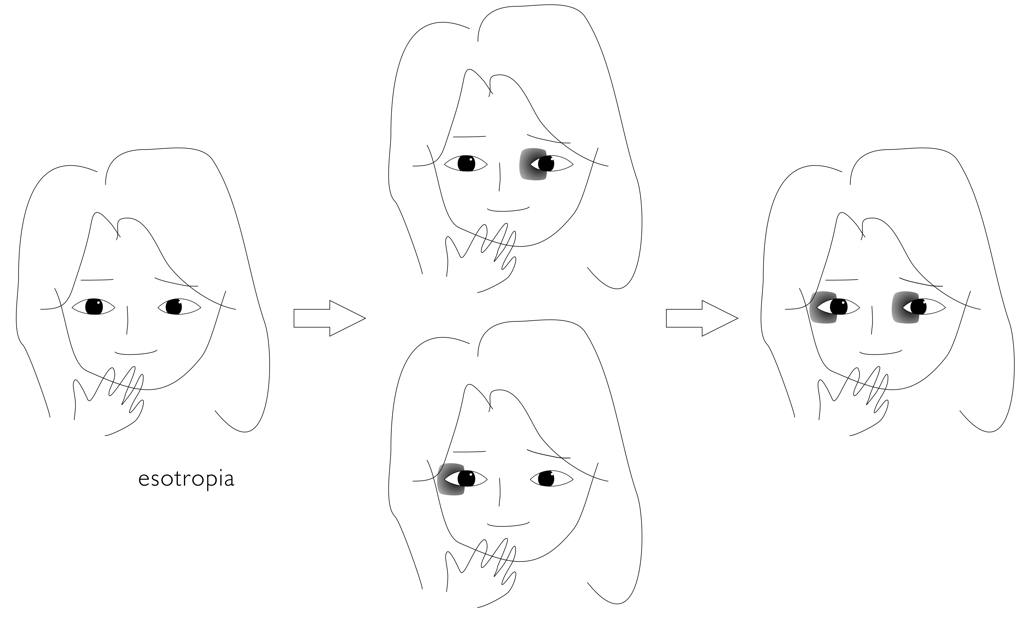
"Possible application of visual illusion1) to the improvement of squint appearance: for esotropia2)"
1) Eye shadow-dependent gaze illusion
2) In these images, the left eye is supposed to be a squint.
Copyright Akiyoshi Kitaoka 2014 (February 21)
cf.
1. Effects of eye shadows
1.1 Effects of dark eye shadows
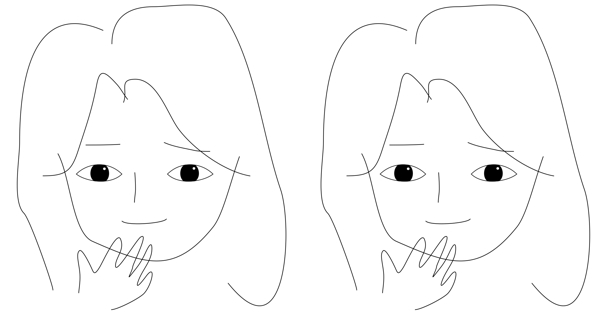
Suppose this was the original face
↓
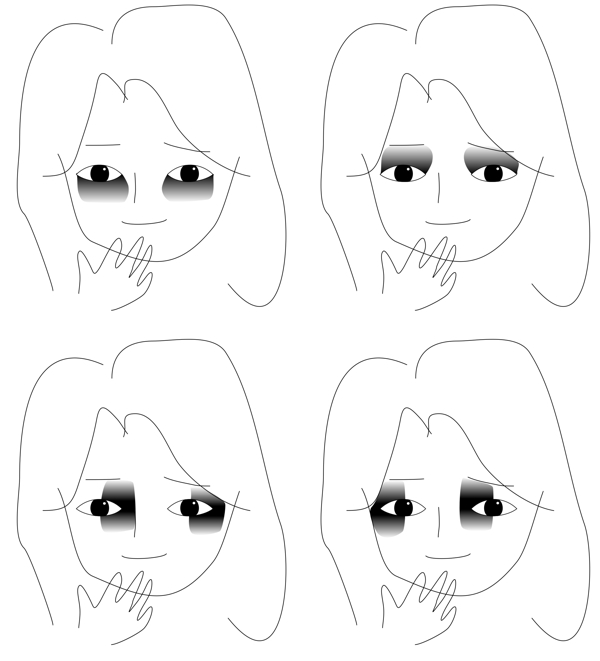
Copyright Akiyoshi Kitaoka 2010
The eye direction appears to be upward in the upper-left image, downward in the upper-right one, leftward in the lower-left one, and rightward in the lower-right image. These images show apparent repulsion effects of eye direction against dark eye shadows.
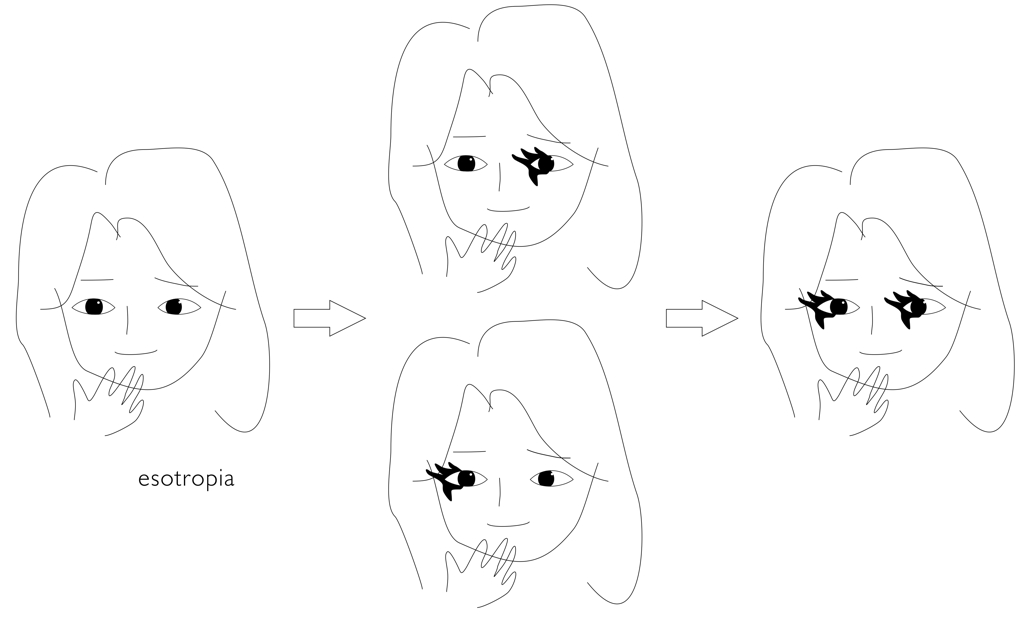
"Possible application of visual illusion to the improvement of squint appearance: for esotropia #2"
Copyright Akiyoshi Kitaoka 2014 (February 21)
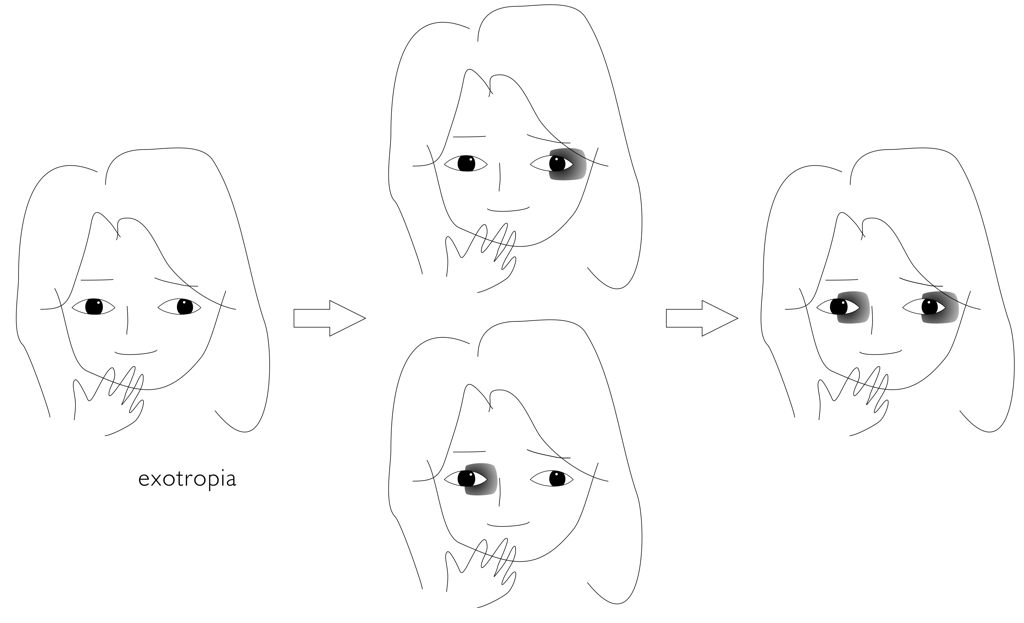
"Possible application of visual illusion to the improvement of squint
appearance: for exotropia"
Copyright Akiyoshi Kitaoka 2014 (February 21)
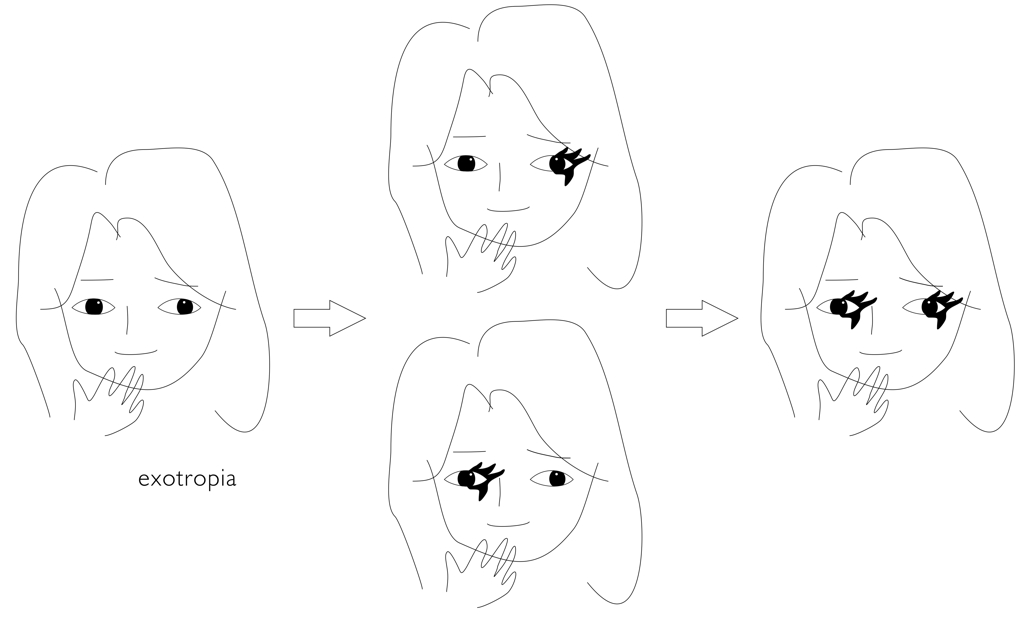
"Possible application of visual illusion to the improvement of squint appearance: for exotropia #2"
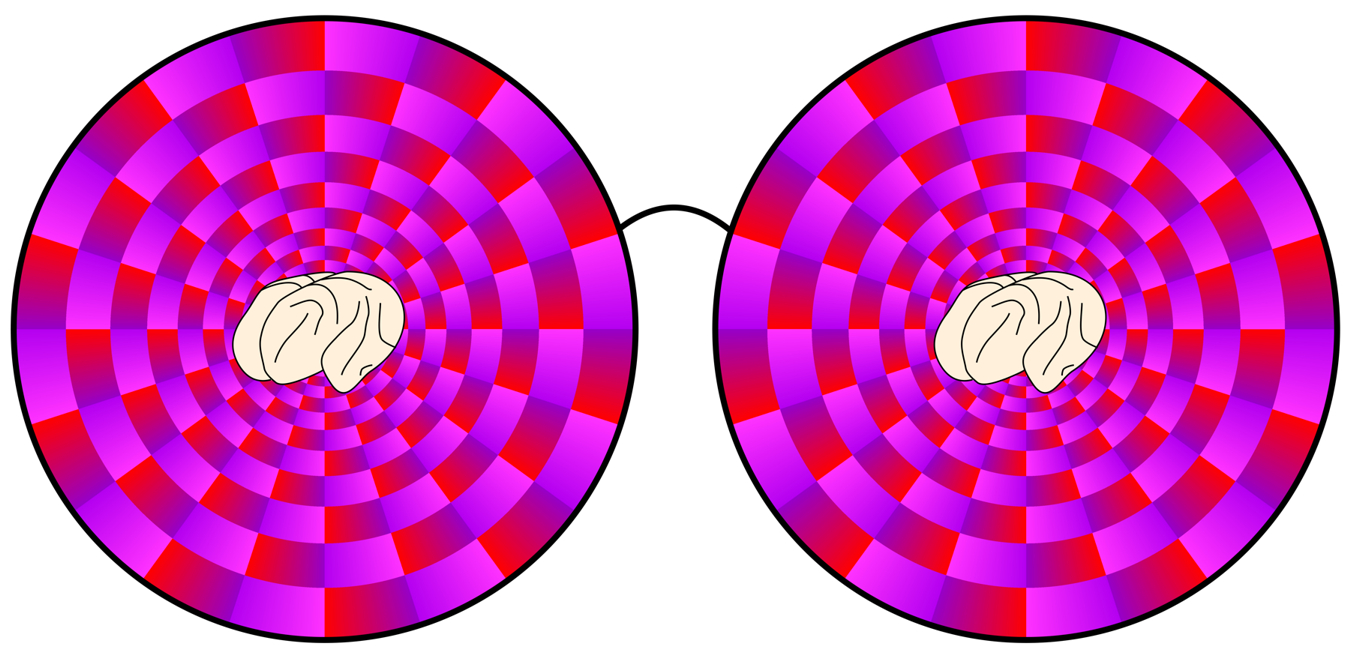
"Brain-training glasses"
Copyright Akiyoshi Kitaoka 2012 (October 10)
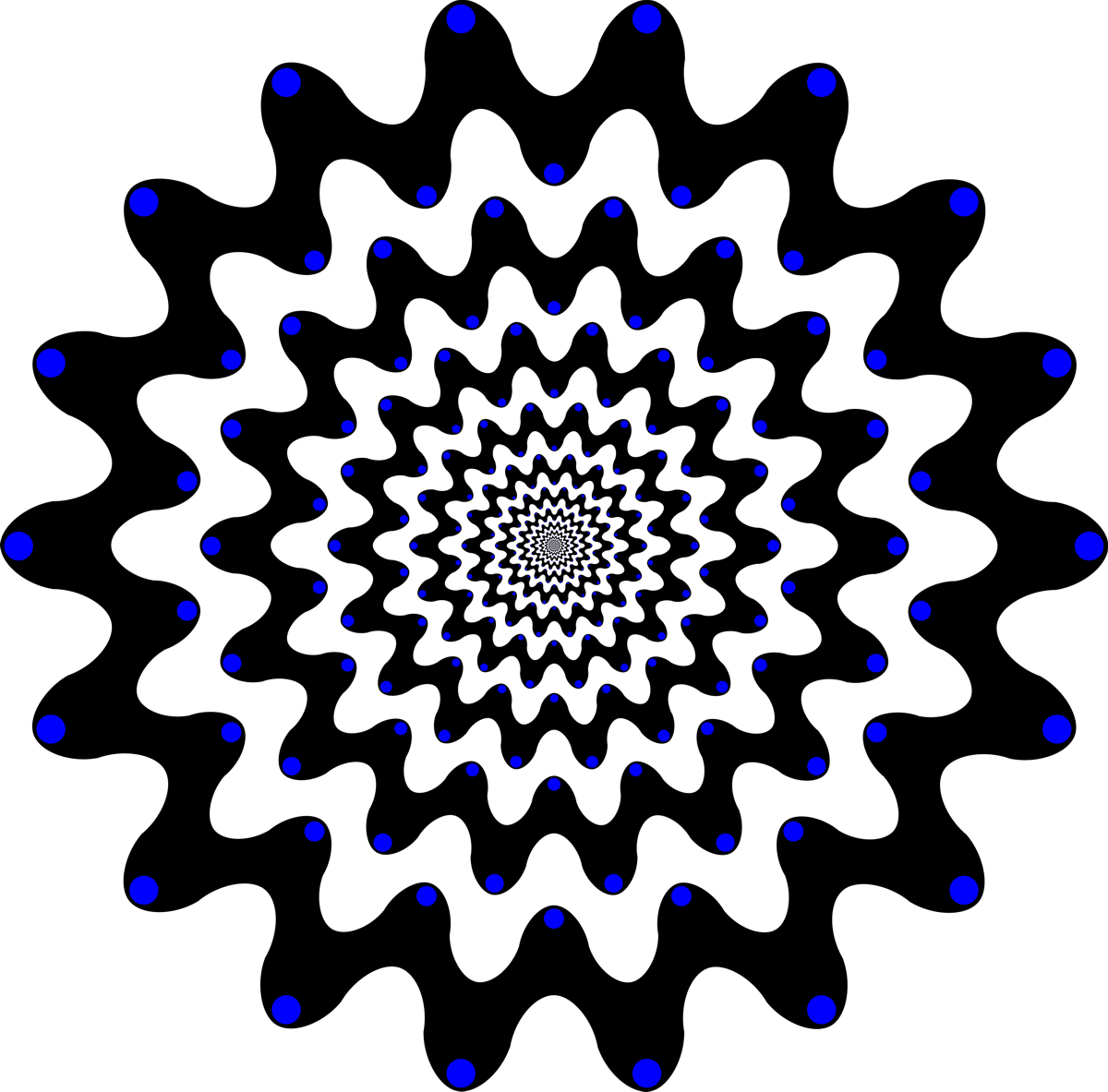
"A brief image for the detection of visual field deficits: Method
of reduction of the extinction illusion"
One gazes at the center with one eye, and blue dots appear to extinguish soon. When the observer approach or move away from the image slowly, blue dots appear to emerge again. If there is a part which lacks blue dots, the part might possibly be a deficit of the visual field. The blind spots are observed easily. This method is effective in the range within about 15-deg eccentricity, depending on the size of the display or print.
Copyright Akiyoshi Kitaoka 2011 (June 19)
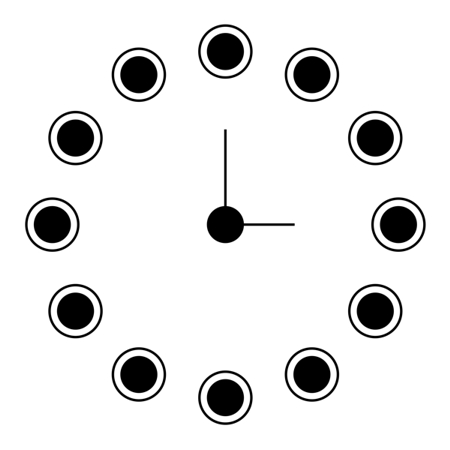
"Delboeuf illusion clock"
The circle at the center appears to be smaller than each of the others, though they are the same size.
Copyright Akiyoshi Kitaoka 2010 (December 11)